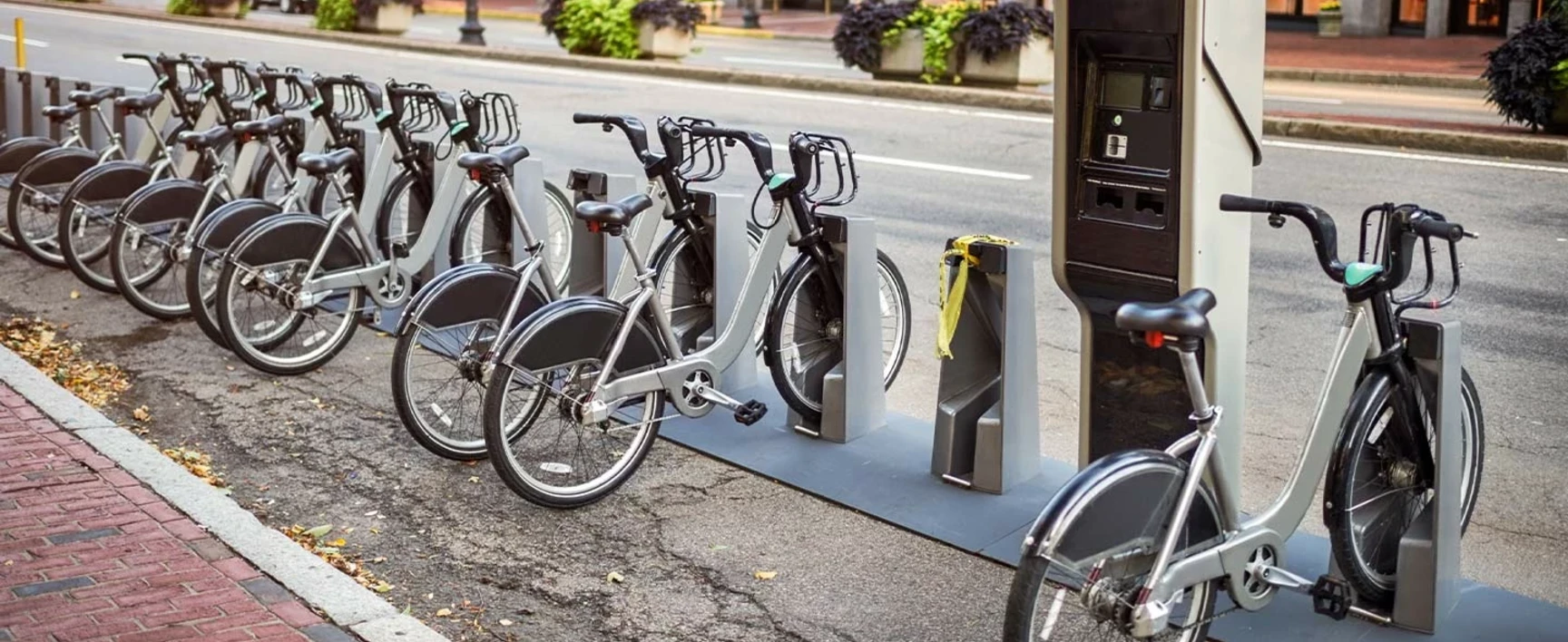With new requirements now in play, existing buildings may require extensive retrofitting to accommodate the powered mobility needs of their users/tenants, such as an e-bike. Buildings that are still in the design phase may have to undergo redesign in anticipation of future use.


Regulatory Background
As many news outlets have recently reported, including the New York Times and CNN, battery fires are on the rise as more of us ride e-bikes and e-scooters powered by lithium-ion batteries. Of course, as early as July 2016 self-balancing scooters (“hoverboards”) were being recalled by the Consumer Product Safety Commission (“CPSC”) after a rash of fires, but they were more of a novelty product. Mainstream use of micromobility devices in the US did not really gain momentum until 2017, when rentable e-scooters began to proliferate across metropolitan areas.
New York City emphatically did not allow such things, and only took a tentative first step of legalizing pedal-assist e-bikes with a top speed of 20 mph in July 2018. E-scooters and non-pedal-assist (“throttle”) bikes continued to be prohibited in NYC…until the upheaval of COVID-19. To meet the demands of overworked deliveristas, wary commuters, and others, NYC Council finally legalized most micromobility devices – which are called “powered mobility” devices here – in June 2020, maintaining a speed limit of 20 mph for e-scooters but raising it to 25 mph for e-bikes.
However, by 2021, the increasing frequency of NYC battery fires spurred FDNY to write an entirely new section in the NYC Fire Code (“FC”) governing the storage and charging of powered mobility devices. The revised FC was sent to Council in September 2021 and enacted into law on April 15, 2022 – one week before NYC saw four e-bike fires in a single day injure twelve people. The NYC Housing Authority (“NYCHA”) proposed a sweeping ban on all micromobility devices within NYCHA property in June 2022 before public outcry quashed the proposal. By September/October 2022, in an effort to prevent more fires, Council introduced multiple bills to address dangers that the FC cannot cover, including public informational campaigns; restrictions on sales of unlisted equipment; rules for refurbished batteries; and fines for non-compliance. Five of these bills were enacted on March 2, 2023 and signed into law by the Mayor on March 20, 2023.
FDNY proactively began working on their part of the required informational campaign months ago, issuing an “E-Bike Fire Safety” bulletin in November 2022 that is required to be posted in apartment buildings by April 30, 2023. And in February 2023, the FDNY Commissioner sent an open letter to the CPSC requesting that uncertified powered mobility devices be altogether prevented from being imported or sold in this country.
(It should be noted that the next advancement in portable battery technology, solid-state, promises to be much less flammable than lithium-ion while storing energy even more densely. However, solid-state powered mobility devices are not expected to be widely available anytime soon.)
What do building owners need to know about having micromobility devices on the premises?
Zoning
While powered mobility devices are not yet explicitly listed in the NYC Zoning Resolution (“ZR”), when their use and storage are “accessory” to residential or commercial uses they are theoretically allowed in any zoning district that allows the underlying residential or commercial use. But, when there are multiple powered mobility devices being charged or repaired and not all of them are under the ownership of the tenant of the space, the use would cease to be accessory and instead potentially become Use Group ("UG") 7. This UG includes “bicycle rental or repair shops” and “electric vehicle charging stations and automotive battery swapping facilities.” UG 7 is only permitted in manufacturing districts and C2, C6 (except C6-1A), and C8 commercial districts.
Note that commercial establishments offering powered mobility devices for sale may also get pushed into UG 7 from the more common UG 6, which covers “bicycle sales” and general retail. Building owners should check their Certificates of Occupancy (“COs”) to see what UGs are allowed on their property – click here for assistance doing so.
Code
Applicability of the Building Code (“BC”) depends on many factors, including but not limited to: age of building; height and size; occupancy groups contained; construction classification; risk category; and presence of fire protection systems. But because the BC section on powered mobility devices (section 406.11) defers entirely to the FC, the characteristics of the overall building do not matter – only the characteristics of the space containing the devices.
FC 309.3 is a NYC-only code section that is not found in the International Fire Code (“IFC”) model code, inserted into the IFC’s existing section on “powered industrial trucks”. The vehicles (pallet stackers, etc) used inside industrial warehouses are often electric to prevent noxious emissions, and so IFC 309 is the only place in the model code that mentions battery-powered mobility devices.
Notably, the following situations are exempt from FC 309.3:
- “Charging of a single powered mobility device by and in the presence of its owner or user”, i.e. an office or delivery worker; and
- Storage or charging at a 1-2 family home;
- Storage or charging of not more than five non-commercial devices inside an individual apartment.
The exemptions seem to balance the use by individuals that depend on transportation in their home and business and forcing more stringent requirements for larger concentrations that are geared for commercial use.
What FC 309.3 requires in all other situations is that batteries and chargers be UL-listed and inspected for damage prior to any re-charging. Although these provisions may be challenging to enforce landlords will be required to monitor powered mobility storage rooms by:
- May not contain any (other) combustible or hazardous materials/waste
- If adjoining a repair/service facility, must be 1-hour fire-separated from such facility
- Must have a fire extinguisher (minimum 4A:20B:C rating)
If the devices are being charged and not simply stored, additional provisions apply – these also require frequent monitoring:
- Natural or mechanical ventilation per Mechanical Code specifications
- No extension cords or power strips
- Minimum 3’ distance between charging devices
- Minimum 2' distance between charging battery packs if less than 20 kWh total energy capacity, minimum 3’ distance if more
- Maximum 50 kWh battery energy capacity being charged simultaneously
- No grouping of battery packs in cabinets unless the cabinets are approved for such purpose
- If six or more devices being charged indoors, the room must be:
- Dedicated for such use and only accessible by authorized personnel;
- 1-hour fire-separated on all sides;
- Climate-controlled to maintain optimal temperature band;
- Fully sprinklered;
- Equipped with smoke detector or smoke alarm, connected to building fire alarm if a building-wide system exists.
Conclusion
With all of these requirements now in play, existing buildings may require extensive retrofitting to accommodate the powered mobility needs of their users/tenants. Buildings that are still in the design phase may have to undergo redesign in anticipation of future use. For guidance navigating the complexities of the code, please feel free to reach out to SOCOTEC via this form.

Talk to our Experts
Want to speak with an expert about micromobility charging?

You may also like

Get the latest updates about SOCOTEC, subscribe to our newsletter!
Get the latest updates about SOCOTEC, subscribe to our newsletter!








